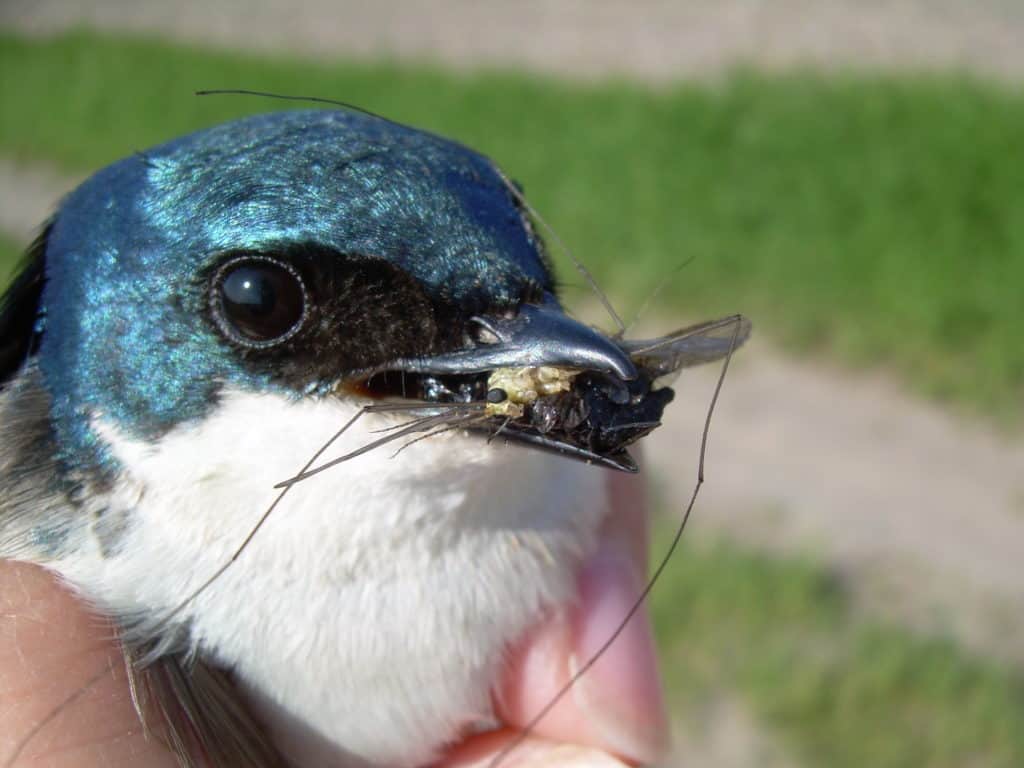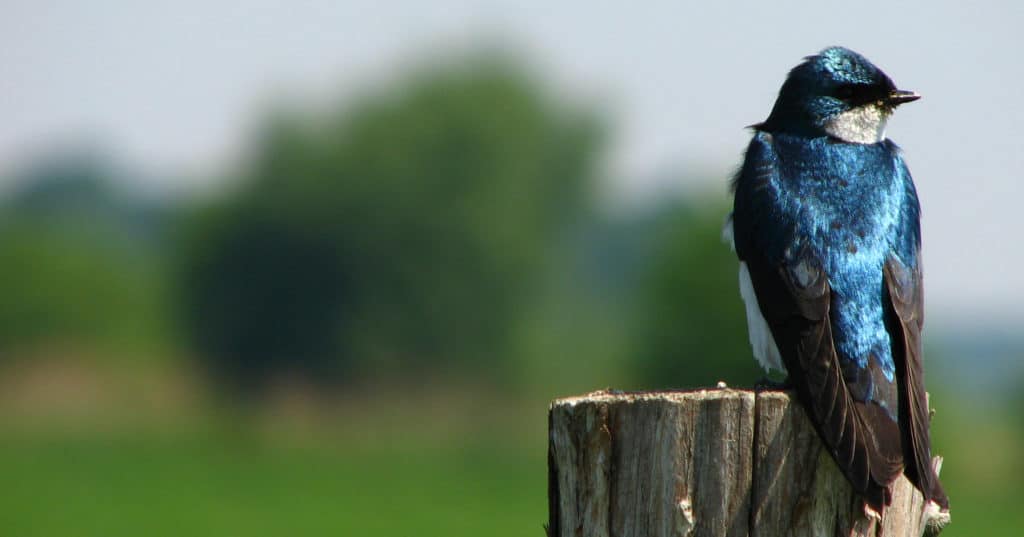Share this article
Tree swallows ingest dozens of pesticides
Tree swallows are ingesting various types of pesticides through their insect diet, even when they don’t live near large industrial farms where the chemicals are most prevalent.
“There is strong potential for cascading effects [on the ecosystem],” said Fanie Pelletier, a biology professor at the University of Sherbrooke in Quebec and one of the authors of a study published recently in Ecological Applications tracking how much of the pesticides the birds might be ingesting.
Pelletier and her colleagues were studying the reasons for a decline in tree swallows (Tachycineta bicolor) observed by birders in southern Quebec. The researcher wondered if the pesticides used on farms in the area might be responsible, as other studies in Europe and North America had found that agriculture affected tree swallow numbers.
“[Tree swallows were] a good species to use to understand more generally why this group of birds is declining,” she said.
But previous research had indicated that both the structure of the farms itself—crop type and landscape—and ingestion of pesticides could affect the swallows.
“So far, we do not have evidence that exposure to pesticides directly affect birds, but it affects their food,” Pelletier said.

Tree swallows bunch captured insects into balls to feed to nestlings. Credit: Véronique Bellavance
In a long-term project at the university beginning in 2004, researchers set up nest boxes on farms in southern Quebec. For this study, they examined over 400 nest boxes on 10 different farms spread over an area of about 10,000 square kilometers. The areas varied from intensive soy or corn farms to cattle pastures or smaller mixed crop farms.
Every year from 2013 to 2018, the researchers tracked about 800 nestlings and about 400 adult tree swallows.
A provincial government report had revealed the water supplies there contained pesticides, but they wanted to see if the tree swallows were ingesting the chemicals through their food. They created a novel method to intercept the food that parents intended to deliver to their nestlings.
Tree swallows usually catch several insects while foraging, bunching the food into a kind of ball they deposit into their offspring’s mouths—sometimes including as many as nine individual insects from varied species. Pelletier and her co-authors put collars onto chicks’ necks that were loose enough to allow the chicks to breathe but small enough so they couldn’t swallow the balls of food. As soon as the adult left, the researchers swooped in and stole the food ball from the chick’s mouth, so they could test the insect balls for pesticide content. Then, they removed the collar. Since adults often feed their chicks several times every hour, the researchers never had to wait too long.
The researchers collected a few of the balls from every nest box. They analyzed them and tested them for 54 different types of pesticides. The results showed that a total of 47 pesticides were present in the samples, or 87% of the pesticides they were testing for. They found that overall, 46% of the insect balls they tested had traces of at least one pesticide.
Insect balls they collected at every farm also had at least one pesticide, even when farms likely used little or no pesticides. This is partly because birds fly—tree swallows from a small farm with little or no pesticides might fly off to forage in a larger farm nearby. But the larger, intensified corn and soy farms had higher proportions of pesticides than smaller farms or pastures.

Scientists suggest future research on tree swallows should focus on blood samples to determine any impacts in reproduction or other health-related issues. Credit: Andréanne Lessard
Pelletier said they also found caffeine and Acetaminophen common in drugs like Tylenol. Some insects the swallows eat spend part of their life stages in water that contains trace amounts of the chemicals from human waste. She suspects these insects might be the source of these chemicals.
The researchers still don’t know how much of the pesticides chicks are ingesting. They only collected a few balls of insects from each nest, and adults can deliver dozens of food balls per day. They may forage in different areas throughout the day, capturing different types of insects that all have different amounts of pesticide. Pelletier said the next stage of this research would be to take blood samples from the birds themselves to see how much they are ingesting overall—something they are considering doing next.
That would also help researchers determine whether the pesticides impact reproduction. “We did not find effect of exposure on reproductive performance in our study,” Pelletier said. “However, our measure of exposure is ‘crude’ because it does not tell us the concentration to which birds were exposed during development.”
Header Image:
Insects gathered by tree swallows in Quebec were found to contain a total of 47 pesticides.
Credit: Andréanne Lessard








